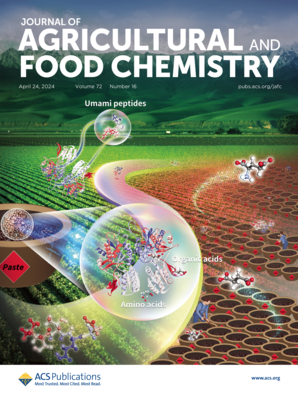Engineering of tnaC-Based Tryptophan Biosensors for Dynamic Control of Violacein Production
IF 5.7
1区 农林科学
Q1 AGRICULTURE, MULTIDISCIPLINARY
引用次数: 0
Abstract
Tryptophan not only serves as a fundamental building block for protein synthesis but also acts as a metabolic precursor for a diverse array of high-value chemicals. Although a few tryptophan-responsive biosensors are currently available, there is a growing interest in developing high-performance biosensors. In this study, we create a miniature toolkit of tryptophan biosensors based upon the leader regulatory region of the tnaCAB operon, which is responsible for tryptophan catabolism in Escherichia coli. Four variants are generated by engineering the tnaC leader sequence, which encodes a leader peptide composed of 24 amino acid residues. Subsequently, the performance of both the natural tnaC sequence and its engineered variants is assessed in a reporter strain based on the MazEF toxin-antitoxin system. The results demonstrate that two engineered variants exhibit increased sensitivity to low levels of tryptophan. Moreover, the engineered biosensors are further optimized by replacing the native promoter of tnaC with a phage-derived constitutive promoter. Intriguingly, the engineered biosensors can be reconstructed for extended application in Pseudomonas putida, a robust microbial chassis for metabolic engineering. In summary, our study expands the toolkit of tryptophan biosensors that can be broadly used for the bioproduction of many other high-value tryptophan-derived products.

求助全文
约1分钟内获得全文
求助全文
来源期刊
CiteScore
9.90
自引率
8.20%
发文量
1375
审稿时长
2.3 months
期刊介绍:
The Journal of Agricultural and Food Chemistry publishes high-quality, cutting edge original research representing complete studies and research advances dealing with the chemistry and biochemistry of agriculture and food. The Journal also encourages papers with chemistry and/or biochemistry as a major component combined with biological/sensory/nutritional/toxicological evaluation related to agriculture and/or food.

 求助内容:
求助内容: 应助结果提醒方式:
应助结果提醒方式:


